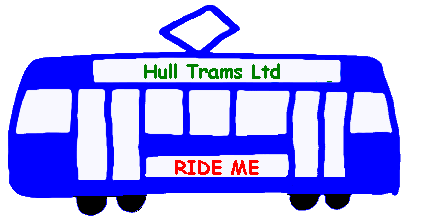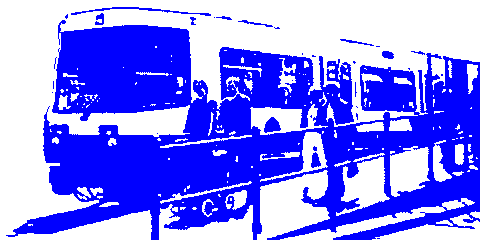
(This supposes a separate topic approach to portfolio assessment)

| Would Hull benefit from a new light rapid transit tramway system? |
| Where would lines go? |
This shows a proposal from 1975 to have a tram line up Spring Bank, along the low level line, and then both up the Foredyke drain and the dismantled Hull to Hornsea railway. Since this article was written, the two routes have been made into cycle routes.
The BBC Radio Humberside presenters Andy Comfort and Tom Hepworth's proposal made in 2003 (discussed as information for students) was about utilising existing tracks, former tracks and cycle routes, wide radial roads and developing a network with a major pivot at Stoneferry (where the high loop line crosses on its way to Hull Docks). The use of the Hornsea route is similar to the 1975 proposal. A track bed to Anlaby and Willerby is the old Hull and Barnsley Railway route with deviations using Willerby Road and Kingston Road. It would use a freight only line and a new curve near Gyspyville to connect with Paragon Station and new developments in this area.
It has to be said that there are some objections to such a plan. The high loop line would be under utilised compared with the more direct route into the city centre. There are now cycle routes on old railway routes which would be lost to tramways, and frankly an argument is that these would be better going out to Withernsea and Hornsea again, even as light rapid transit. There would be much conflict with existing traffic including cycles: some Hull roads are quite narrow. Alternatives such as bus lanes and separate bus channels, and perhaps electric power but for trolleybuses are arguably more flexible. Much more can be achieved by removing many traffic lights in Hull and installing roundabouts (perhaps with pedestrian lights that also assist flow) when considering congestion.
Images of proposed routes are indeed images as required well as examples of doing some research. Written documentation of articles on trams (e.g. Sheffield and Manchester experience; Blackpool and Crich as heritage tourist examples) would be needed. Writing on trams might mean a report, a proposal, an evaluative essay, a memo on problems or advantages. These could well derive from discussion and a talk: there is a great deal of overlap between assessed areas.
| Pros | Cons |
| Fast | Large construction cost |
| Frequent | Alternatives like bus lanes, concrete ways cheaper |
| Cheaper than trains | Cyclists get trapped in rail gaps |
| Certainty of route | Mixed road in centres use causes danger |
| Priority over other traffic | Congestion to others |
| Move large numbers quickly | Duplicates buses |
| Good quality ride | Expensive fares and local taxation impact |
These pros and cons are examples of those generated through guided whole class to wipeboard contributions in the lessons. These and the arguments (as further above, including matters of the routes: although having a tram system at all and discussion of routes cannot be easily spearated) would have to be incorporated into a talk and discussion.
In terms of meeting Key Skills Communication (English, Literacy) components a discussion would contain contributions in which information would be put in by different contributors. Once arguments had been contributed by different people on points that seem to oppose each other, and where there is some resolution, then the discussion would continue to oher parts of the pro and cons list.
In terms of meeting Key Skills Communication (English, Literacy) components a talk would contain all the sample points above presented by one person (the speaker) in a structured form moving through the list of pros and cons and arguments presented in documents.

Lessons took place at Hull College on 22 October 2003, for the purpose of showing how to construct a discussion and a talk in particular within Key Skills Communication (English, Literacy).